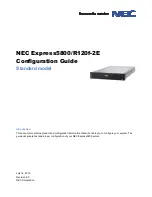
T
T
T
S
S
S
8
8
8
G
G
G
S
S
S
S
S
S
D
D
D
2
2
2
5
5
5
S
S
S
-
-
-
S
S
S
T
T
T
S
S
S
1
1
1
6
6
6
G
G
G
S
S
S
S
S
S
D
D
D
2
2
2
5
5
5
S
S
S
-
-
-
S
S
S
/
/
/
M
M
M
T
T
T
S
S
S
3
3
3
2
2
2
G
G
G
S
S
S
S
S
S
D
D
D
2
2
2
5
5
5
S
S
S
-
-
-
S
S
S
/
/
/
M
M
M
T
T
T
S
S
S
6
6
6
4
4
4
G
G
G
S
S
S
S
S
S
D
D
D
2
2
2
5
5
5
S
S
S
-
-
-
S
S
S
/
/
/
M
M
M
T
T
T
S
S
S
1
1
1
2
2
2
8
8
8
G
G
G
S
S
S
S
S
S
D
D
D
2
2
2
5
5
5
S
S
S
-
-
-
M
M
M
T
T
T
S
S
S
1
1
1
9
9
9
2
2
2
G
G
G
S
S
S
S
S
S
D
D
D
2
2
2
5
5
5
S
S
S
-
-
-
M
M
M
2.5” Solid State Disk
Transcend Information Inc.
V1.08
13
Figure 6 : cominit sequence
Description:
1. Host/device are powered and operating normally with some form of active communication.
2. Some condition in the device causes the device to issues a COMINIT
3. Host calibrates and issues a COMWAKE.
4. Device responds – The device detects the COMWAKE sequence on its RX pair and calibrates its transmitter (optional).
Following calibration the device sends a six burst COMWAKE sequence and then sends a continuous stream of the
ALIGN sequence starting at the device's highest supported speed. After ALIGN
P
Dwords have been sent for 54.6 us (2048
nominal Gen1 Dword times) without a response from the host as determined by detection of ALIGN
P
primitives received
from the host, the device assumes that the host cannot communicate at that speed. If additional speeds are available the
device tries the next lower supported speed by sending ALIGN
P
Dwords at that rate for 54.6 us (2048 nominal Gen1
Dword times.) This step is repeated for as many slower speeds as are supported. Once the lowest speed has been
reached without response from the host, the device enters an error state.














































